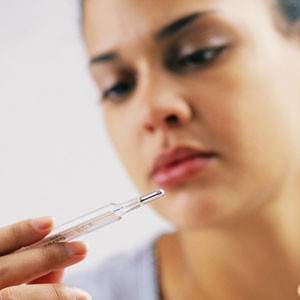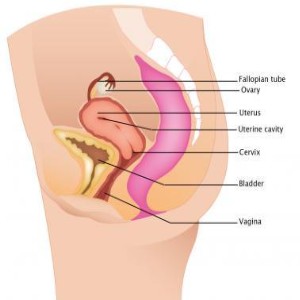 Ovulation is one of the most important aspects of a woman’s life, especially when she is planning to embark on the journey of motherhood.
Ovulation is one of the most important aspects of a woman’s life, especially when she is planning to embark on the journey of motherhood.
Though it happens inside a woman’s body, it is sometimes difficult to understand when it actually happens. Understanding the exact ovulation period is important in order to conceive. Every woman ovulates at different time of the month, so you need to pay attention on the changes of your own body to understand the symptoms of ovulation.
Though there are several ovulation kits in the market to check the day on which you may ovulate, you can find the ovulation symptoms on your own just by understanding your body a little better. There are a number of physical symptoms through which you can easily understand if you are ovulating in a particular cycle.
Different Symptoms of Ovulation
High Basal Body Temperature
Increase in the basal body temperature is one of the surest signs of ovulation. It is the body temperature in the resting state. Morning time is considered to be the best time to check your body temperature to understand the symptoms of ovulation.
Right after ovulation, most women observe a slight increase in their body temperature of about 0.5 to 1 degree Fahrenheit. The basal temperature of the body increases after ovulation as a response to the change in the hormone levels.
Cervical Mucus
Increase in cervical mucus is also one of the main symptoms of ovulation. It happens just before the ovulation and also around the ovulation time. The cervix is placed at the lower portion of a uterus joining the vagina. Cervical mucus is produced at the cervix of a woman.
During the beginning of the cycle, the cervical mucus will be produced in limited amount. However, as the cycle progress, you can observe an increase in the cervical mucus. During the ovulation time, the cervical mucus can be found in abundance.
Change in Cervical Position
The change in the position of the cervix is an important symptom of ovulation. During the initial half of the cycle, you can feel the cervix to be dry and firm. Also, the position of the cervix will be low and can be easily reached by inserting the finger inside the vagina.
Source : http://www.duofertility.com/my-fertility/common-ovulation-signs/cervix-position
You may also observe that the entrance point of the cervix will be closed during this period. But, before ovulation, there will be a change in the position and the feel of cervix.
The cervix becomes moist and soft and the entrance point of the cervix becomes open. During the peak ovulation time, the entrance of the cervix increases to its maximum.
Increased Sex-Drive
Increased libido or sex drive is a significant symptom of ovulation. You may experience an increased desire to have sex during the ovulation period. As it is known to be the best time to conceive, many people believe that it is naturally designed this way for ensuring successful reproduction.
Mittelschmerz
Mittelschmerz or pain in the lower abdomen is one of the most significant symptoms of ovulation. This symptom can be experienced for few hours or for about two to three days during the ovulation time.
Tender Breasts
Tender breasts can be felt around the ovulation, making it one of the main symptoms of ovulation.
Photo Credit : http://www.webmd.com/baby/ovulation-and-transport-of-egg



